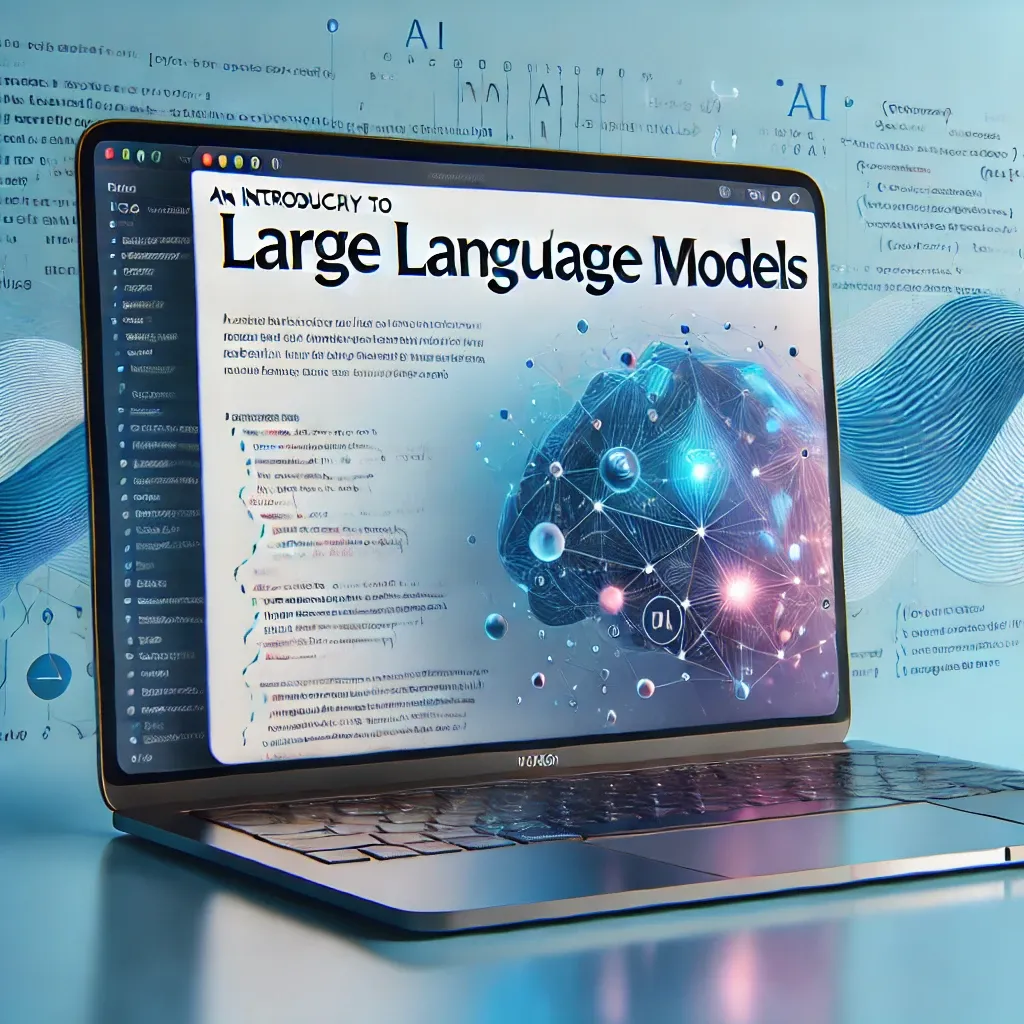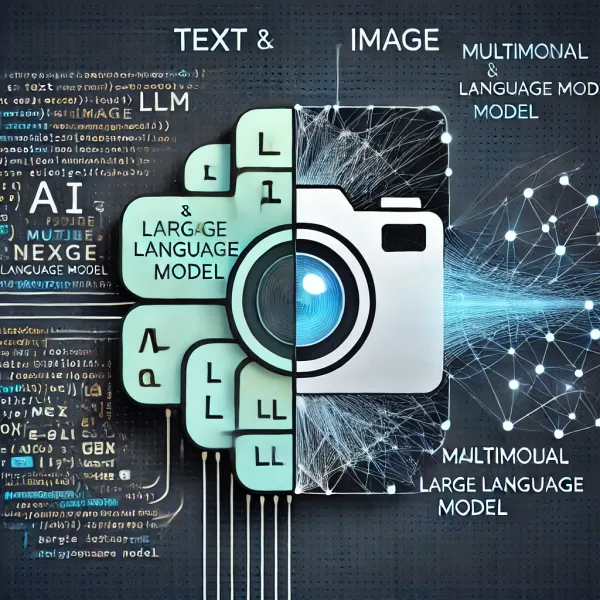An Introduction to Large Language Models: Revolutionizing Natural Language Processing
Discover the world of Large Language Models (LLMs) and their impact on natural language processing. Learn about their architecture, training process, applications, and the challenges they present in this comprehensive introduction.

In recent years, the field of Natural Language Processing (NLP) has witnessed a revolutionary transformation with the advent of Large Language Models (LLMs). These powerful AI systems have dramatically improved our ability to process and generate human-like text, opening up new possibilities in various domains. In this blog post, we'll dive deep into the world of LLMs, exploring their architecture, training process, applications, and the challenges they present.
What are Large Language Models?
Large Language Models are artificial intelligence systems designed to understand, process, and generate human language. They are called "large" because they are trained on massive amounts of text data and contain billions of parameters. These models use deep learning techniques, particularly transformer architectures, to capture the nuances and complexities of language.
Some well-known examples of LLMs include:
- GPT (Generative Pre-trained Transformer) series by OpenAI
- BERT (Bidirectional Encoder Representations from Transformers) by Google
- T5 (Text-to-Text Transfer Transformer) by Google
- RoBERTa by Facebook AI
The Architecture of Large Language Models
At the heart of most modern LLMs lies the transformer architecture, introduced in the landmark paper "Attention Is All You Need" by Vaswani et al. in 2017. The transformer model relies on a mechanism called self-attention, which allows the model to weigh the importance of different words in a sentence when processing language.
Key components of the transformer architecture include:
- Embedding Layer: Converts input tokens (words or subwords) into dense vector representations.
- Positional Encoding: Adds information about the position of tokens in the sequence.
- Multi-Head Attention: Allows the model to focus on different parts of the input when generating each output element.
- Feed-Forward Neural Networks: Process the attention output to capture more complex patterns.
- Layer Normalization and Residual Connections: Stabilize training and allow for deeper networks.
LLMs typically use a variant of this architecture, with some models focusing on the encoder (like BERT) for understanding tasks, while others emphasize the decoder (like GPT) for generation tasks.
Training Large Language Models
Training an LLM is a computationally intensive process that requires vast amounts of data and specialized hardware. The training process generally involves two main stages:
1. Pre-training
During pre-training, the model is exposed to a large corpus of text data from various sources, such as books, websites, and articles. The model learns to predict the next word in a sequence or to fill in masked words, depending on the specific training objective. This process allows the model to learn general language patterns and build a broad understanding of grammar, semantics, and world knowledge.
Common pre-training objectives include:
- Causal Language Modeling: Predicting the next token given the previous tokens (used in GPT models).
- Masked Language Modeling: Predicting masked tokens in a sentence (used in BERT).
- Span Corruption: Reconstructing corrupted spans of text (used in T5).
2. Fine-tuning
After pre-training, the model can be fine-tuned on specific tasks or domains. This involves training the model on a smaller, task-specific dataset to adapt its knowledge to particular applications. Fine-tuning can significantly improve performance on targeted tasks while requiring much less data and computation than pre-training.
Examples of fine-tuning tasks include:
- Sentiment analysis
- Named entity recognition
- Question answering
- Text summarization
- Machine translation
Applications of Large Language Models
LLMs have found applications in numerous fields, revolutionizing how we interact with and process text. Some notable applications include:
- Chatbots and Virtual Assistants: LLMs power sophisticated chatbots that can engage in human-like conversations and assist with various tasks.
- Content Generation: These models can generate high-quality articles, stories, and even code, assisting content creators and programmers.
- Language Translation: LLMs have significantly improved machine translation quality, making it easier to communicate across language barriers.
- Text Summarization: LLMs can condense long documents into concise summaries, saving time for readers.
- Sentiment Analysis: These models can accurately gauge the sentiment of text, useful for brand monitoring and customer feedback analysis.
- Code Generation and Completion: LLMs trained on code repositories can assist developers by generating code snippets or completing partially written code.
- Question Answering Systems: LLMs can power sophisticated QA systems that understand and respond to complex queries.
- Text-to-Speech and Speech-to-Text: When combined with other AI technologies, LLMs can improve the accuracy of speech recognition and the naturalness of synthesized speech.
Challenges and Ethical Considerations
While LLMs have shown remarkable capabilities, they also present several challenges and ethical concerns:
1. Bias and Fairness
LLMs can inadvertently learn and amplify biases present in their training data. This can lead to unfair or discriminatory outputs, particularly in sensitive areas like hiring or legal decisions. Researchers and developers must work to identify and mitigate these biases.
2. Environmental Impact
Training large models requires significant computational resources, leading to high energy consumption and carbon emissions. The AI community is increasingly focusing on developing more efficient training methods and models.
3. Misinformation and Fake Content
The ability of LLMs to generate human-like text raises concerns about the potential for creating and spreading misinformation or fake content at scale. Developing robust detection methods and promoting responsible use is crucial.
4. Privacy Concerns
LLMs trained on large datasets may inadvertently memorize and reproduce sensitive information. Ensuring data privacy and developing techniques to prevent unauthorized information disclosure are ongoing challenges.
5. Overreliance and Automation Bias
As LLMs become more capable, there's a risk of over-relying on their outputs without critical evaluation. Users must be educated about the limitations of these models and the importance of human oversight.
6. Transparency and Explainability
The complexity of LLMs makes it challenging to understand how they arrive at specific outputs. Improving model interpretability and developing explainable AI techniques are active areas of research.
The Future of Large Language Models
As research in the field of LLMs continues to advance, we can expect several exciting developments:
- Multimodal Models: Future LLMs may integrate text, images, audio, and video, leading to more versatile and context-aware AI systems.
- Improved Efficiency: Researchers are working on making LLMs more compact and energy-efficient without sacrificing performance.
- Enhanced Reasoning Capabilities: Future models may exhibit improved logical reasoning and common-sense understanding, bridging the gap between language processing and general intelligence.
- Personalization: LLMs may become better at adapting to individual users' writing styles and preferences, providing more tailored interactions.
- Ethical AI: Increased focus on developing models that are fair, unbiased, and aligned with human values.
- Domain-Specific Models: While general-purpose LLMs will continue to improve, we may see more specialized models optimized for specific industries or tasks.
Conclusion
Large Language Models have ushered in a new era in Natural Language Processing, offering unprecedented capabilities in understanding and generating human-like text. As these models continue to evolve, they promise to transform various aspects of how we interact with technology and process information.
However, it's crucial to approach the development and deployment of LLMs with careful consideration of their limitations and potential societal impacts. By addressing challenges related to bias, privacy, and environmental concerns, we can harness the full potential of these powerful AI systems while ensuring their responsible and beneficial use.
As software developers and AI enthusiasts, staying informed about the latest developments in LLMs is essential. Whether you're looking to integrate these models into your applications or simply understand their impact on the tech landscape, the field of Large Language Models offers exciting opportunities for innovation and exploration.
Note: This blog post provides an introduction to Large Language Models as of 2024. The field is rapidly evolving, and new developments may have occurred since the time of writing. Always refer to the latest research and publications for the most up-to-date information.




